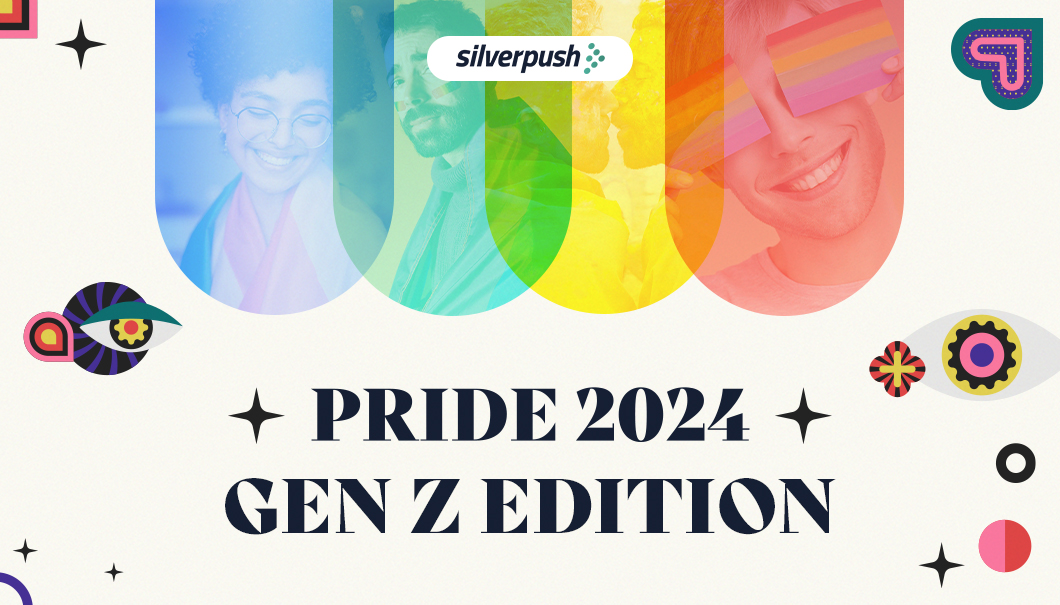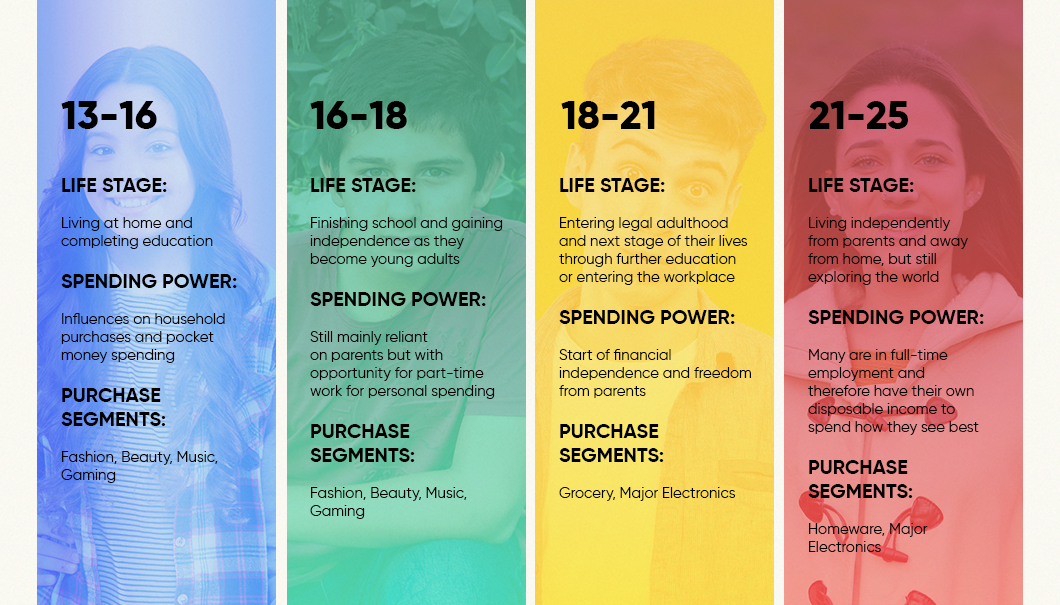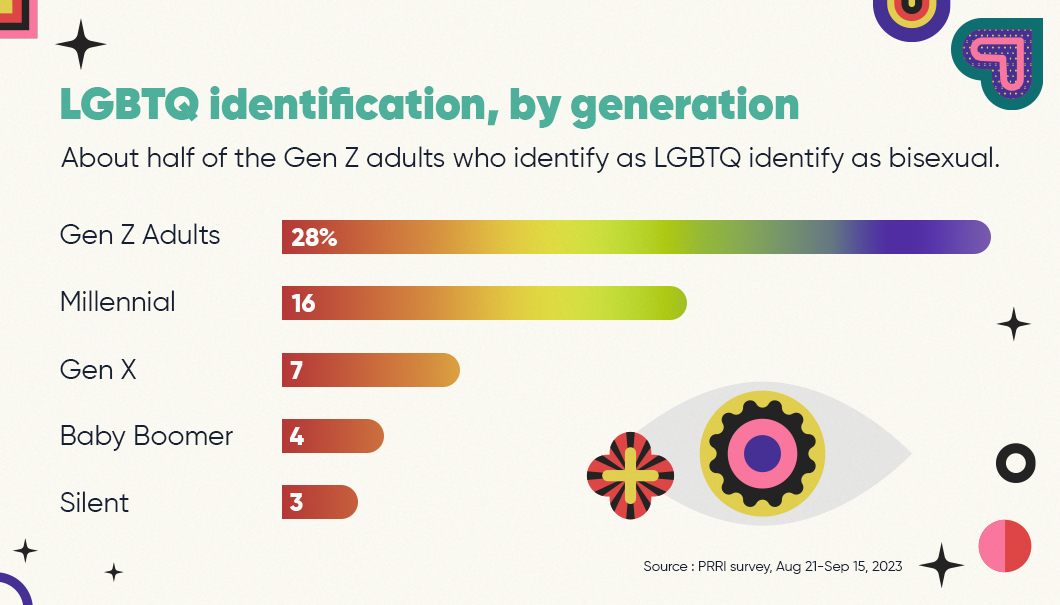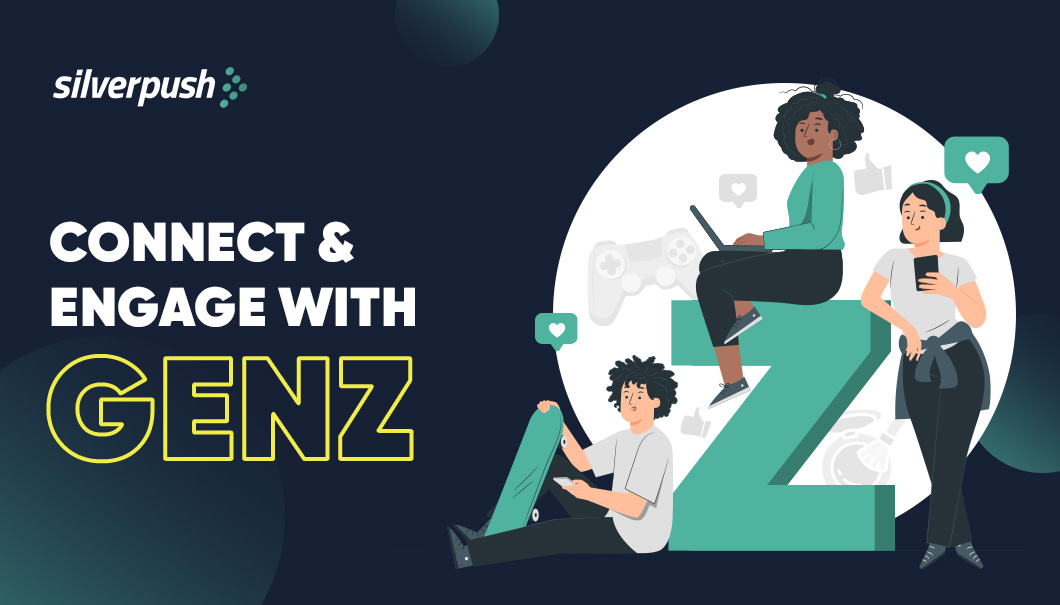Pride 2024: Gen Z Edition
PUBLISH DATE: 08 May 2024
Pride holds profound significance for young people, regardless of their LGBTQ+ status. It transcends mere symbolism, embodying a celebration of inclusivity and love. However, Gen Z is increasingly scrutinizing the authenticity behind corporate support during Pride. A superficial display, such as a rainbow logo, no longer suffices to demonstrate alignment with their values. Discover how your brand can genuinely participate in the celebration of Pride month without resorting to tokenism.
Gen Z and Pride: What it Means to Them?
Gen Z, the approximately 67 million teens and young adults born after 1996 is steadily gaining prominence across social, political, technological, and cultural landscapes. With their increasing eligibility to vote, emergence as heads of households and primary decision-makers, and recognition of the power they hold through digital platforms, particularly social media, GenZ is asserting its influence in multifaceted ways.

Regardless of their own personal sexual orientation, Gen Z overwhelmingly stands as allies to the LGBTQIA+ community, with only 18% holding the belief that homosexuality is “wrong.” Moreover, a greater portion of Gen Zers (37%) acknowledge that gender exists on a spectrum compared to those who adhere to the binary concept of gender (31%).
Given the fluidity and openness surrounding sexual and gender identities within this generation, brands face the challenge of breaking corporate norms to authentically connect with LGBTQIA+ Gen Zers and their allies. For instance, research by Horowitz reveals that 23% of Gen Zers prefer to be asked their preferred pronouns rather than having their gender assumed. This indicates a need for brands to reconsider how they address gender and identity in their messaging and creative offerings, especially on social media platforms.
Additionally, McKinsey’s research highlights that 70% of Gen Z consumers actively seek out ethical brands. Mere symbolic gestures, such as posting graphics on Instagram, no longer suffice. Gen Z demands tangible information and concrete actions to substantiate brands’ ethical claims.
Where Should Brands Be Talking?
GenZ isn’t just using YouTube for the videos; they’re actively engaging with the ads as well. According to research by Precise TV and Giraffe Insights, six in 10 teens opt to watch YouTube ads rather than skipping them, with almost half able to recall ads they’ve seen on the platform.
Why we care. This data underscores the importance of brands seeking to connect with Gen Z to reevaluate their advertising strategies. Shifting ad spending from traditional TV to YouTube could yield stronger engagement, recall, and influence on purchase decisions.

Our take: In response to evolving consumer identities, it’s crucial for the marketing and advertising industry to prioritize inclusivity and diversity. Beyond being the most racially and ethnically diverse American generation ever, over 1 in 4 (28%) Gen Zers self-identify as LGBTQIA+.
How can Brand Connect with Gen Z?
GenZ values brands that prioritize personalization and individualization, seeking tailored products and services along with personalized brand communications. A significant 38% of Gen Z prefers personalized ads, nearly double the preference of Millennials, driven partly by the desire to explore new brands and products.
Hyper-contextual and creative intelligence solutions offer advertisers a streamlined path to connect with their target audience. Contextual intelligence, powered by AI, delves deep into video content to pinpoint highly relevant contexts aligning with brand objectives. Advertisers can further fine-tune campaigns with custom inclusion and exclusion themes to ensure ads appear in appropriate contexts.
To engage Gen Z effectively, innovative approaches are vital. With consumers’ increasingly short attention spans, turning them from passive observers into active participants boosts engagement, consideration, and purchase intent. Among various creative intelligence solutions, interactive video ads shine. These innovative AI solutions enhance existing brand videos with interactive layers, allowing consumers to engage directly with the content.
Conclusion
In conclusion, as Gen Z trends continue to shape the cultural landscape and assert their influence across various spheres, brands must adapt and evolve to authentically connect with this dynamic generation. By prioritizing inclusivity, diversity, and ethical practices, and leveraging innovative marketing strategies tailored to Gen Z’s and Pride preferences, brands can forge meaningful connections and thrive in an ever-changing marketplace.
For AI-driven, Gen Z-focused advertising solutions, reach out to Silverpush.
Capturing Gen Z Attention: Top Trends Marketers Need to Know in 2024
PUBLISH DATE: 22 February 2024
Step aside, millennials; a fresh generation is in town – Gen Z(Generation Z) has taken the spotlight. Born between 1997 and 2012, these digital natives are rewriting the rules of everything, from fashion to politics, and most importantly, how they consume information. For Gen Z, the search engine is now a TikTok, a YouTube tutorial, or even a casual browse through Amazon. This seismic shift in behavior presents a golden opportunity for savvy brands to use Gen Z trends.
With an estimated spending power of $360 billion & an increasing influence (41 million GenZers shall be eligible to vote in 2024 US elections. Their influence extends beyond consumer choices to shaping the political landscape. As the torchbearers of the future, Gen Z trends demand a careful approach – one that not only caters to their preferences but also resonates with their aspirations and ideals.
But these digital natives tick differently. They crave authenticity, not airbrushed perfection. They value experiences that enrich their lives aligning with their beliefs, not just catchy slogans. So, how do the marketers navigate this brave new world and win Gen Z hearts in 2024?
Key trends that will define how brands can win over Gen Z in 2024
1. The Rise of the Social Search Engine
Google, move over! Gen Z turns to social media platforms like Instagram and TikTok for answers. These platforms, with their curated feeds and engaging content, are becoming new search engines. This shift opens doors for brands to be discovered organically. Think of it as a giant virtual party where you’re not just selling, but joining the conversation.
In the past year, several platforms introduced search advertising offerings, indicating an increased focus on social search that marketers are likely to prioritize in 2024.
For advertisers, it’s not about shouting your message; it’s about being present where Gen Z is, answering their questions, and sparking their curiosity in a natural, engaging way.
2. Fashion & Beauty: Get Weird, Get Wonderful
GenZ now makes up more than 40% of Pinterest’s 482 million active monthly users and is the platform’s fastest-growing demographic. Prepare to be dazzled by aquamarine makeup, chunky hoops the size of planets, and hairstyles inspired by jellyfish!
Pinterest, a Gen Z haven, predicts these Gen Z fashion trends will explode in 2024. Campaigns with themes such as “eclectic grandpa” style, a quirky blend of retro streetwear, and chic cardigans, are gaining traction. Given the platform’s impressive 80% accuracy rate in predicting past trends, marketers are encouraged to pay attention.
What drives this maximalist aesthetic? According to Pinterest, it’s all about squeezing every ounce of joy out of life and surrounding yourself with things that make you happy. For marketers, this translates to creative freedom. Embrace the bold, the weird, and the playful. Create campaigns that encourage self-expression and individuality, while experimenting with new formats like augmented reality filters or interactive quizzes that tap into GenZ’s love for games and experiences.
3. The Midas Touch with a Conscience
GenZ has the power to make brands soar, but they’re also incredibly mindful. They care about equality, sustainability, and the impact their choices have on the world. A recent Edelman study revealed that 73% of GenZ consumers choose brands based on their values. So, it’s not enough to simply be trendy; brands must demonstrate a genuine commitment to making the world a better place.
In the upcoming 2024 U.S. election, the influence of young people will be substantial, as millennials and Gen Z voters are projected to make up 40% of the electorate. Nevertheless, both Democrats and Republicans will face challenges in mobilizing Generation Z voters to participate in the electoral process.
Beyond the Trends: Building Lasting Connections
While these Gen Z trends offer a roadmap, the crucial takeaways are, that they’re diverse, nuanced individuals with unique interests and aspirations. The key is to move beyond the trends among Gen Z and focus on building genuine connections. Engage with them in authentic conversations, listen to their concerns, and create experiences that enrich their lives.
In 2024, the brands that win Gen Z’s hearts won’t be the loudest or flashiest. They’ll be the ones who understand their language, respect their values, and offer them more than just a product – they’ll offer a sense of belonging, a platform for self-expression, and a chance to make a difference. So, dive deep into the world of Generation Z trends. Embrace the weird, the wonderful, and the socially conscious.







